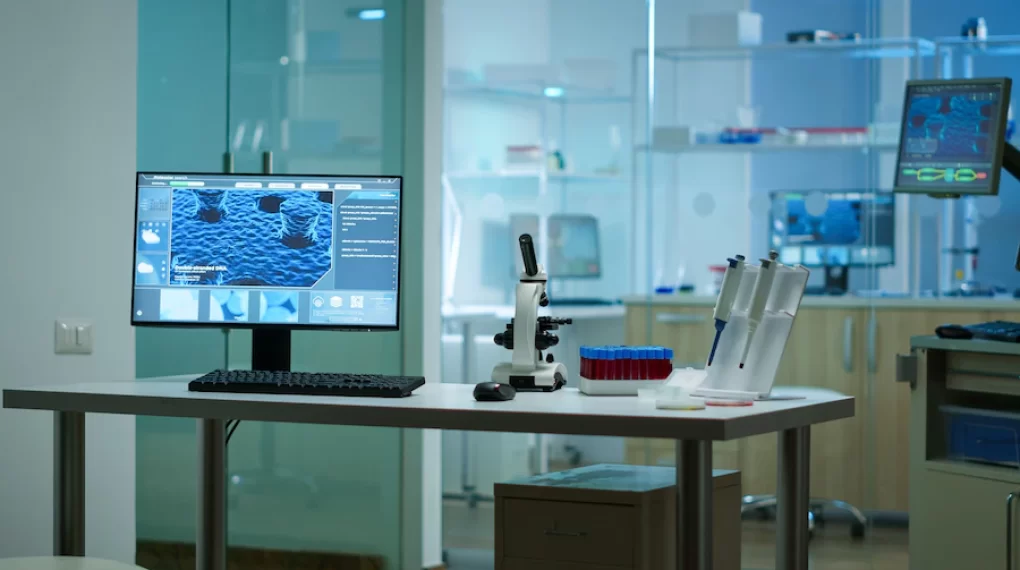
Starting a medical laboratory from scratch can be an intimidating task. It requires research, planning, and financial investments to ensure that everything is up to standards and can provide quality care for those seeking it.
However, with the proper guidance and information, starting a new medical laboratory from the ground up can be surprisingly manageable.
Not to mention, it’s a highly profitable field. In 2021, statistics estimated the global clinical laboratory service market size to be USD 201.94 billion, with projections of a CAGR of 3.7% from 2022 to 2030. Here are some tips to consider when starting a medical laboratory.
Top 4 Useful Tips For Starting A Medical Lab From Scratch
1. Analyze the Market

Before investing time or money into launching a new medical laboratory, you must understand the market you plan to serve. Research local competition, and compare prices, services offered, and customer reviews to evaluate how your proposed business will fit into the current landscape.
Ensure you’re also aware of all licensing requirements for your particular area – this is especially true if you plan to offer tests that require additional accreditation or certification.
It’s also important to consider the demographics of your target customers. What types of services do they need? Any trends or changes in the medical industry will affect their choices? Consider cultural, religious, and political influences since these factors may affect customer choices.
Additionally, consider any potential challenges that large corporate medical laboratory conglomerates pose, as they could significantly impact your ability to compete.
2. Secure Funding

Once you’ve done your due diligence and understand the market, it’s time to start looking for funding for your medical laboratory.
Depending on the size of your operation, you may need a combination of startup capital from investors, bank loans, or grants from government sources. Understanding the financial requirements will also help convince potential lenders that you’re serious about starting a successful business.
When seeking investors, it’s essential to have a business plan that clearly outlines your goals and objectives. This should include a detailed breakdown of startup costs and expected profits and an analysis of the competitive landscape.
Make sure you can quantify the potential impact on your bottom line with measurable ROI projections. Additionally, consider drafting a pitch deck that showcases your vision and highlights potential investors’ return on investment (ROI).
Once you have the business plan, it’s time to start looking for investors. There are multiple avenues for doing this, such as pitching directly to angel investors or venture capitalists, utilizing crowdfunding platforms like Kickstarter or Indiegogo, or using governmental resources such as the Small Business Administration (SBA). Additionally, you should consider seeking out grants from government agencies or foundations.
3. Purchase Equipment

To establish a successful medical laboratory, you’ll need to purchase the necessary equipment and supplies needed for testing. When making purchasing decisions, consider both upfront costs and long-term maintenance expenses. Once you’ve bought all the essential materials, ensure that all the equipment is set up correctly, tested, and calibrated before beginning operations.
To ensure that you have suitable materials, seek a reputable and experienced medical lab equipment supplier. They can advise on what equipment is best for your laboratory. You should also consider factors such as the accuracy of the instrument, its reliability, and ease-of-use, before deciding on a particular piece of machinery.
Additionally, if you are on a budget, seek out used equipment in good condition or inquire about purchasing new equipment in bulk with your supplier. Make sure to store the equipment in a safe and secure environment, away from dust, heat, or moisture that could damage it.
Once you’ve purchased all necessary lab materials and equipment, keep detailed records of all purchases for insurance purposes. When setting up the laboratory, consult an electrical engineer on how to properly set up the equipment according to health and safety standards. Finally, ensure you have a maintenance plan for your laboratory’s materials to identify and fix any problems quickly.
4. Hire Staff

Finally, hiring experienced staff who can help manage day-to-day operations and provide quality patient services is essential. Consider recruiting staff with experience in medical laboratory technology or management. Additionally, ensure that you properly train all new employees on safety protocols and adhere to your area’s relevant regulations and standards.
To ensure a smooth transition for new staff, create systems and processes that are well-documented and easy to understand. This could include guidelines for patient care and medical laboratory procedures and policies on handling records, submitting reports, and other tasks. Ensure all staff members understand the regulations they must follow and the service standards they should provide.
In addition, provide incentives for staff members who go above and beyond in their duties. This could include rewards for outstanding customer service or recognition for completing tasks or projects quickly and efficiently.
Staffing a medical laboratory takes time, resources, and effort, especially with the shortage of medical professionals today. However, hiring trained professionals can help ensure the quality of services offered and the safety of patients and staff members.
Closing Thoughts
Starting a medical lab from scratch can be challenging, but it can also be gratifying if approached with care. By following these four tips, you’ll be well on your way to establishing a successful medical laboratory for years to come.
Additional:






